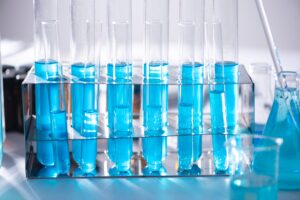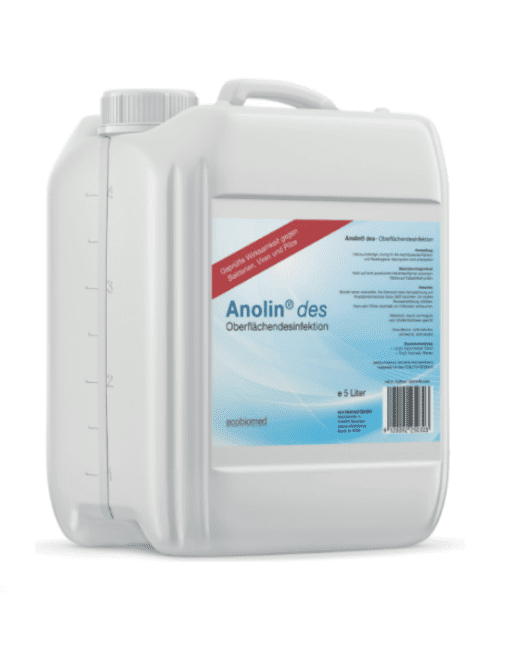Chlorine, chlorine dioxide and sodium hyperchlorite
The active ingredient in Anolin products, natrium hypochlorite, is a potent oxidizing agent which, thanks to its excellent action, is particularly suitable for elimination against germs, bacteria, viruses and fungi. The wide range of applications includes not only surface disinfection, but also drinking water disinfection, as it efficiently kills the Legionella bacterium.
Some people may wonder what a chlorine-containing active ingredient is doing in drinking water systems. But don’t be fooled: Chlorine does not automatically equal chlorine. In contrast to the colloquial understanding of chlorine, which is a collective term for various chlorine gases and hyperchlorites, a clear distinction is made in drinking water disinfection between chlorine, chlorine dioxide and sodium hypochlorite.

Different types of chlorine compared
Both chlorine and chlorine dioxide are hazardous substances that accelerate the embrittlement of plastic pipes and seals and require a higher requirement in handling and storage compared to sodium hypochlorite.
However, sodium hypochlorite must also be specified more precisely. The term must always be considered in connection with the pH of the solution, because neither acidic nor basic sodium hypochlorite is suitable for drinking water purification. A pH value that is too low, which means acidic sodium hypochlorite, means that the chlorate values cannot be maintained and hydrochloric acid and chlorine gas may form. A too high pH value, which means basic sodium hypochlorite, corresponds to the hazardous material chlorine bleach and promotes lime deposits. It also attacks seals and pipes and consequently has a high material wear. Both forms, too low as well as too high pH-values, represent a danger in the application since burns on the skin or even eye irritations or damages can be caused.
In contrast, the pH-neutral sodium hypochlorite, although costly to produce, is the only form in which the active ingredient can be made suitable for drinking water and poses no risk in use. This is because drinking water also has a neutral pH.
The pH-neutral solution AnolinTW is manufactured using a proprietary ECALIT process, which ensures that the product remains stable in its pH value for up to two years. This means that undesirable side effects, such as those caused by too high and too low pH values, are eliminated and the application remains safe and yet effective.
Recent Posts
Haben Sie eine Frage?
Sprechen Sie direkt mit unserem Vertrieb:
- Valeria Foglar-Deinhardstein
- +43 676 6405517
- vfd@loxotec.com




